Abstract
Experiments were undertaken with DMBA-induced mammary tumours of the rat to determine the anti-tumour properties of a new and potent luteinizing hormone releasing hormone (LH-RH) agonist, [D-Ser(But) 6Azgly10]-LH-RH (ICI 118630). Tumours were classified according to their oestrogen-receptor (ER) content. Twice daily i.m. injections of either 5 micrograms or 0.5 micrograms ICI 118630 in saline were as effective as ovariectomy or tamoxifen therapy in causing the regression of ER+ DMBA-induced mammary tumours. ER- mammary tumours showed a more equivocal overall response to ICI 118630, some tumours progressing, others regressing. About one-third of the ER+ tumours disappeared in the 20-day treatment period. Those tumours which did regrow after the cessation of treatment proved to be hormone-dependent. In addition to the inhibitory effects of the LH-RH agonist on pre-existing tumours, ICI 118630 also reduced the total number of new tumours formed during and after treatment.
Full text
PDF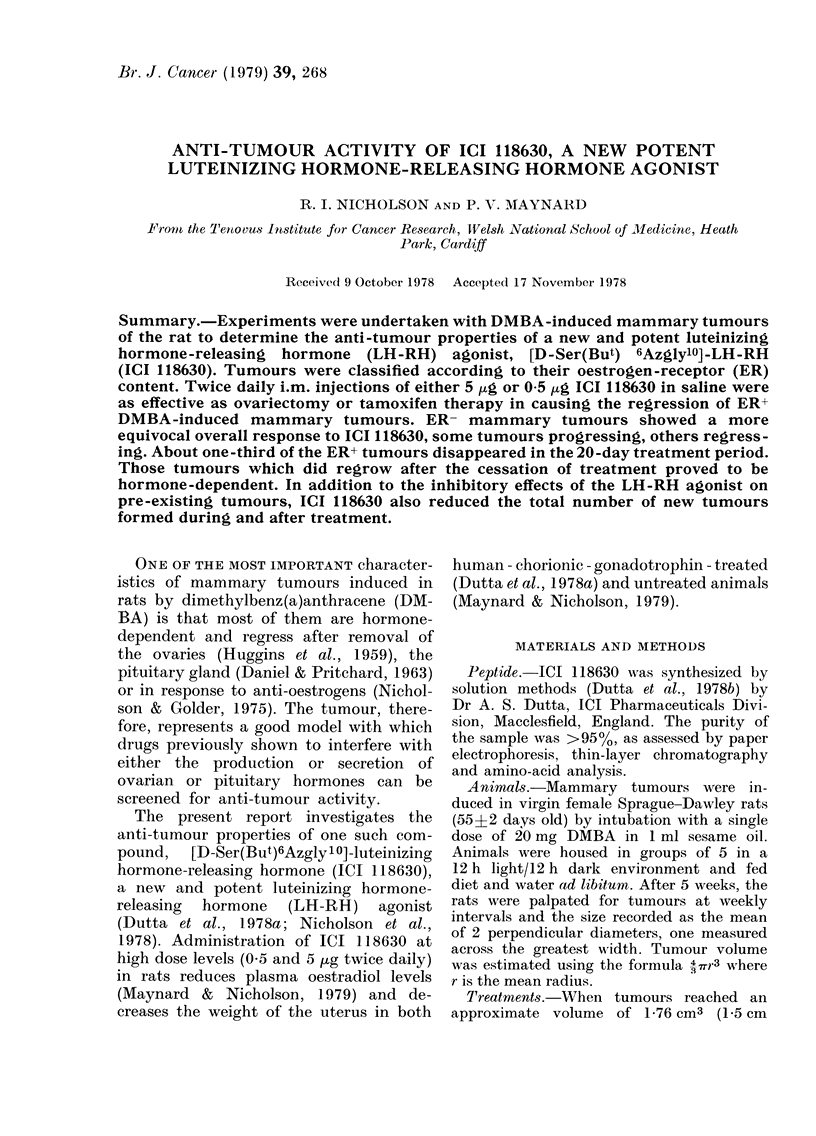
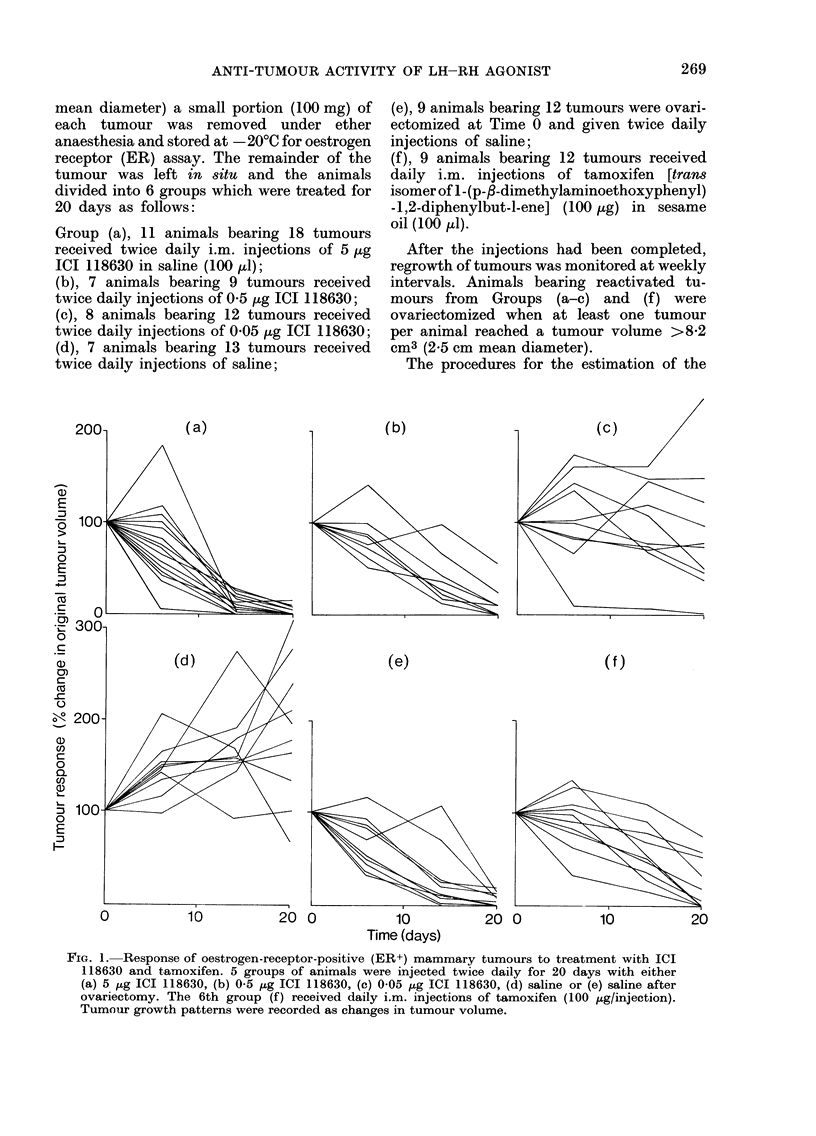
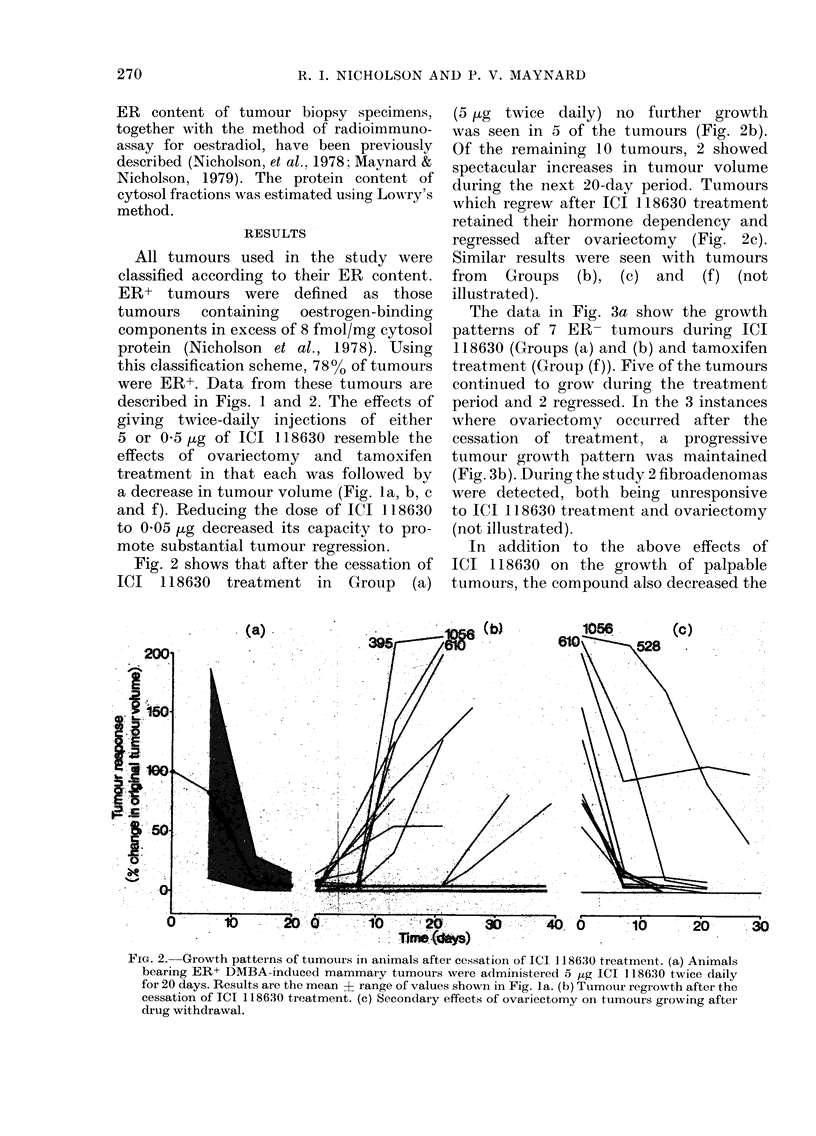
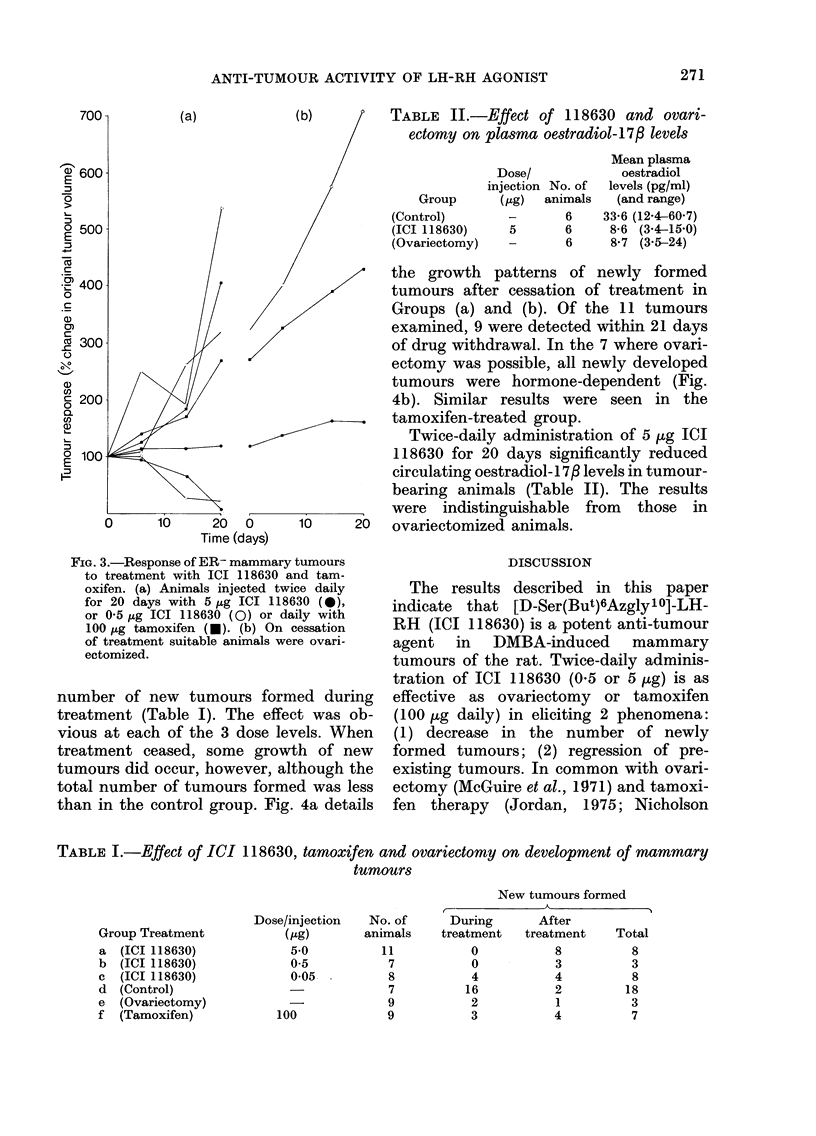
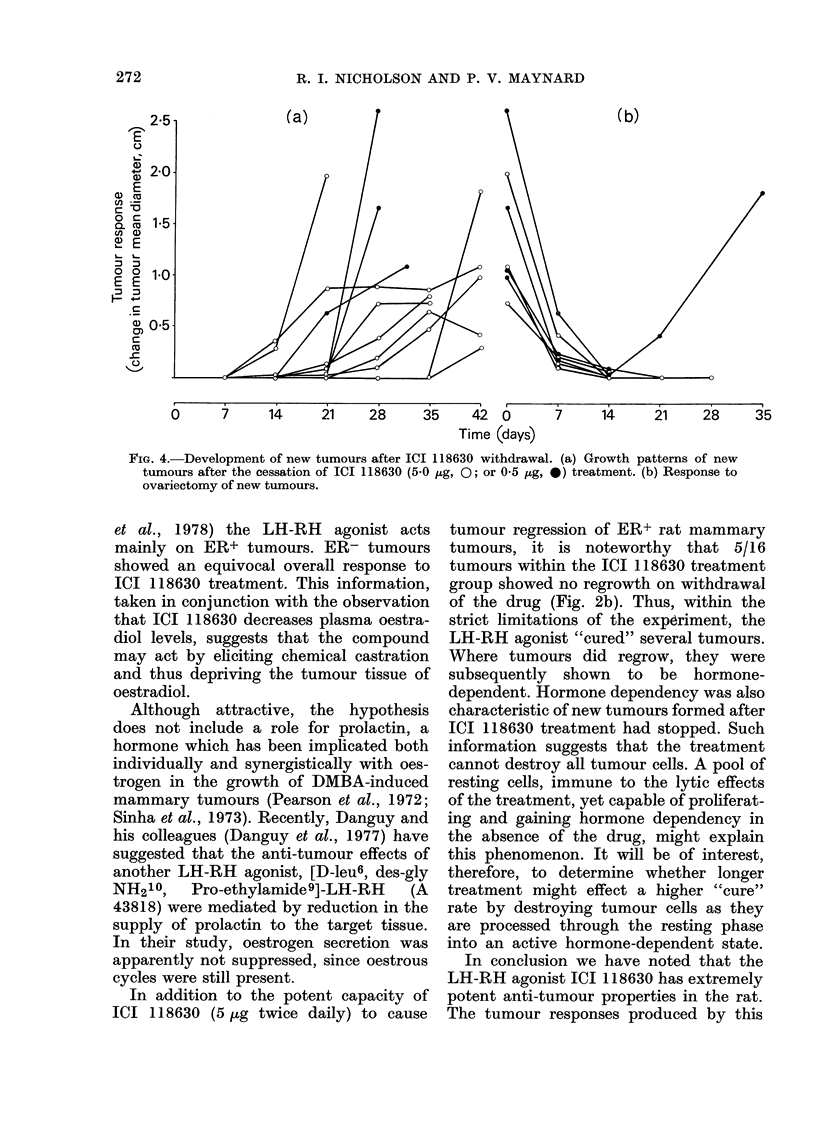
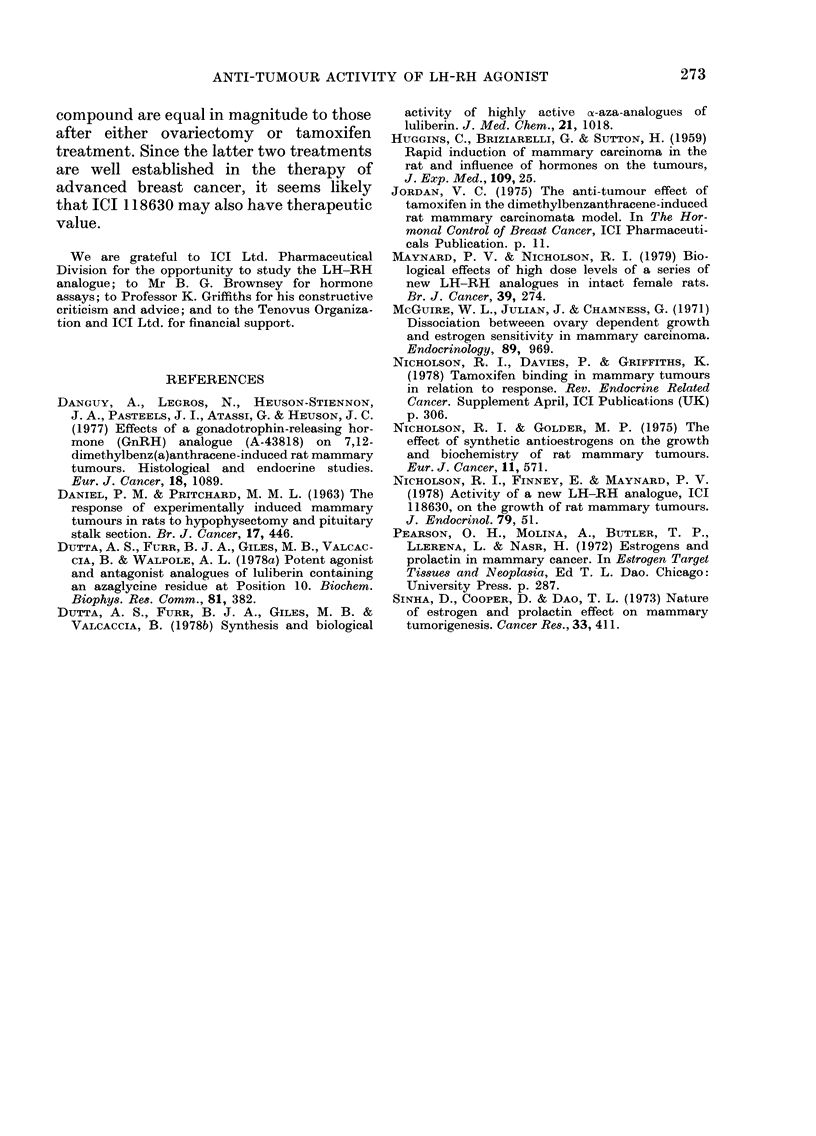
Selected References
These references are in PubMed. This may not be the complete list of references from this article.
- DANIEL P. M., PRICHARD M. M. THE RESPONSE OF EXPERIMENTALLY INDUCED MAMMARY TUMOURS IN RATS TO HYPOPHYSECTOMY AND TO PITUITARY STALK SECTION. Br J Cancer. 1963 Sep;17:446–453. doi: 10.1038/bjc.1963.59. [DOI] [PMC free article] [PubMed] [Google Scholar]
- Danguy A., Legros N., Heuson-Stiennon J. A., Pasteels J. L., Atassi G., Heuson J. C. Effects of a gonadotropin-releasing hormone (GnRH) analogue (A-43818) on 7, 12- dimethylbenz (a)anthracene-induced rat mammary tumors. Histological and endocrine studies. Eur J Cancer. 1977 Oct;13(10):1089–1094. doi: 10.1016/0014-2964(77)90005-6. [DOI] [PubMed] [Google Scholar]
- Dutta A. S., Furr B. J., Giles M. B., Valcaccia B. Synthesis and biological activity of highly active alpha-aza analogues of luliberin. J Med Chem. 1978 Oct;21(10):1018–1024. doi: 10.1021/jm00208a004. [DOI] [PubMed] [Google Scholar]
- Dutta A. S., Furr B. J., Giles M. B., Valcaccia B., Walpole A. L. Potent agonist and antagonist analogues of luliberin containing an azaglycine residue in position 10. Biochem Biophys Res Commun. 1978 Mar 30;81(2):382–390. doi: 10.1016/0006-291x(78)91544-9. [DOI] [PubMed] [Google Scholar]
- HUGGINS C., BRIZIARELLI G., SUTTON H., Jr Rapid induction of mammary carcinoma in the rat and the influence of hormones on the tumors. J Exp Med. 1959 Jan 1;109(1):25–42. doi: 10.1084/jem.109.1.25. [DOI] [PMC free article] [PubMed] [Google Scholar]
- Maynard P. V., Nicholson R. I. Effects of high doses of a series of new luteinizing hormone-releasing hormone analogues in intact female rats. Br J Cancer. 1979 Mar;39(3):274–279. doi: 10.1038/bjc.1979.51. [DOI] [PMC free article] [PubMed] [Google Scholar]
- McGuire W. L., Julian J. A., Chamness G. C. A dissociation between ovarian dependent growth and estrogen sensitivity in mammary carcinoma. Endocrinology. 1971 Oct;89(4):969–973. doi: 10.1210/endo-89-4-969. [DOI] [PubMed] [Google Scholar]
- Nicholson R. I., Golder M. P. The effect of synthetic anti-oestrogens on the growth and biochemistry of rat mammary tumours. Eur J Cancer. 1975 Aug;11(8):571–579. doi: 10.1016/0014-2964(75)90129-2. [DOI] [PubMed] [Google Scholar]
- Sinha D., Cooper D., Dao T. L. The nature of estrogen and prolactin effect on mammary tumorigenesis. Cancer Res. 1973 Feb;33(2):411–414. [PubMed] [Google Scholar]


